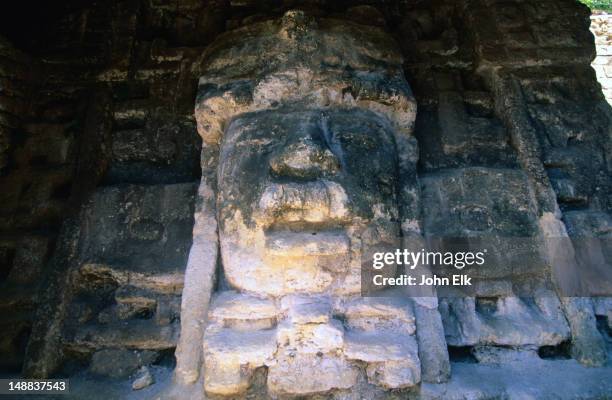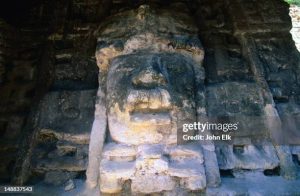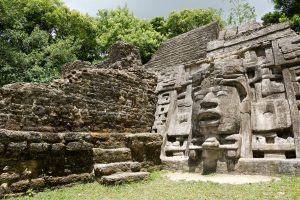Lamanai, Belize: Echoes of a Timeless Maya Civilization

Lamanai, Belize: Echoes of a Timeless Maya Civilization
Lamanai, meaning “Submerged Crocodile” in the Yucatec Maya language, is one of the most iconic and longest-occupied Maya sites in Mesoamerica. Located along the banks of the New River Lagoon in northern Belize, this ancient city thrived for over 3,000 years—making it one of the few Maya cities that continued to be inhabited well into the Spanish colonial period.
Unlike many other abandoned ruins overtaken by dense jungle, Lamanai stands as a remarkable testament to architectural resilience and cultural continuity. Visitors are greeted by towering temples, ceremonial plazas, and finely crafted stone carvings that still whisper stories of ancient rulers, gods, and rituals.
Key Highlights:
-
The Mask Temple (Structure N10-9):
This temple is famous for its massive carved stucco masks flanking the staircase, representing a stylized human face with crocodile features—an homage to the site’s name and its symbolic power in Maya cosmology. These masks are among the best-preserved in the Maya world and date back to the Late Preclassic period (around 200 BC). -
The High Temple (Structure N10-43):
Rising approximately 33 meters (over 100 feet) above the plaza floor, the High Temple was built to impress and dominate the surrounding landscape. Climbing to its summit rewards visitors with a breathtaking panoramic view of the rainforest canopy and the New River Lagoon, offering a glimpse into the vantage point once reserved for Maya elites. -
The Jaguar Temple and Ball Court:
These structures further showcase Lamanai’s ceremonial significance, with altars, intricate carvings, and evidence of ritual games that played central roles in Maya society.


Archaeological Significance:
Excavations led by the Lamanai Archaeological Project—especially those conducted in the 1970s and more recently in 2013—have revealed layers of occupation, from early Preclassic settlements to colonial-era churches built by Spanish missionaries. Artifacts found on-site include pottery, obsidian blades, jade ornaments, and even evidence of metallurgy, which was rare in the Maya lowlands.
Preservation efforts have focused on stabilizing and restoring key buildings while maintaining the harmony between the ruins and the surrounding jungle. The result is a site that feels both ancient and alive—a place where history is etched not only in stone, but also in the rustling leaves and winding roots.
Fun Fact:
Lamanai is unique among Maya cities because it was not abandoned during the Classic Maya collapse. Instead, it remained an active community well into the 17th century, giving it one of the longest-known records of continuous occupation in the Maya world.